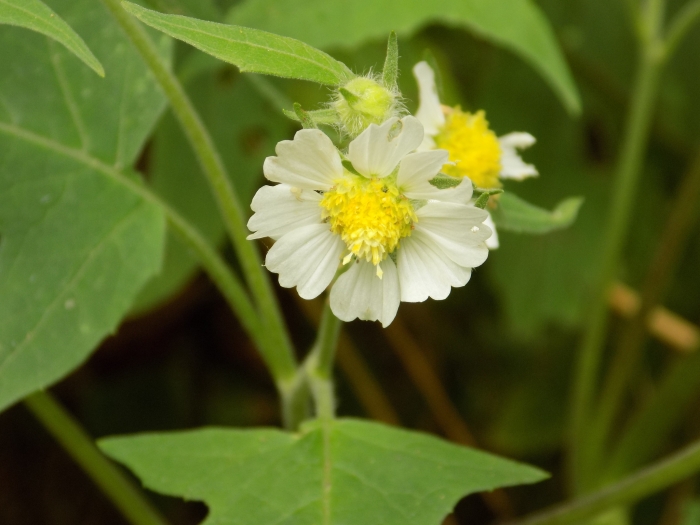Whiteflower Leafcup
(Polymnia canadensis)
Whiteflower Leafcup (Polymnia canadensis)
/
/

Blake Bringhurst
CC BY 4.0
Image By:
Blake Bringhurst
Recorded By:
Copyright:
CC BY 4.0
Copyright Notice:
Photo by: Blake Bringhurst | License Type: CC BY 4.0 | License URL: http://creativecommons.org/licenses/by/4.0/ | Rights Holder: Blake Bringhurst | Publisher: iNaturalist | Date Created: 2016-07-13T10:34:19-07:00 |



















































Estimated Native Range
Summary
Polymnia canadensis, commonly known as Whiteflower Leafcup, is a perennial herb that is native to rich woods, thickets, and forest clearings of Eastern North America. It typically grows to a height of 2-4 feet and a width of 2-3 feet. The plant is characterized by its variable leaf shape, with deeply lobed leaves at the lower part transitioning to simpler leaves higher up. The small, inconspicuous flowers bloom in late summer and are often overshadowed by the large, attractive foliage. The sap is clear, sticky, and has a pleasant fragrance.
Whiteflower Leafcup is valued for its foliage and is used in shaded garden areas, woodland gardens, and naturalized areas. It is a low-maintenance plant that adds texture and greenery to part-shade gardens. While it prefers medium moisture, it requires well-drained soils and can tolerate a range of soil types, from clay to loam. It is not commonly afflicted by serious diseases or pests, but can occasionally suffer from leaf spots. This plant is not known for aggressive roots or invasiveness. It is important to note that Whiteflower Leafcup can spread by self-seeding and may require control to prevent unwanted naturalization.CC BY-SA 4.0
Whiteflower Leafcup is valued for its foliage and is used in shaded garden areas, woodland gardens, and naturalized areas. It is a low-maintenance plant that adds texture and greenery to part-shade gardens. While it prefers medium moisture, it requires well-drained soils and can tolerate a range of soil types, from clay to loam. It is not commonly afflicted by serious diseases or pests, but can occasionally suffer from leaf spots. This plant is not known for aggressive roots or invasiveness. It is important to note that Whiteflower Leafcup can spread by self-seeding and may require control to prevent unwanted naturalization.CC BY-SA 4.0
Plant Description
- Plant Type: Herb
- Height: 2-4 feet
- Width: 2-3 feet
- Growth Rate: Moderate
- Flower Color: White, Yellow
- Flowering Season: Summer, Fall
- Leaf Retention: Deciduous
Growth Requirements
- Sun: Part Shade
- Water: Medium
- Drainage: Fast
Common Uses
Bird Garden, Butterfly Garden, Fragrant, Low Maintenance, Showy Flowers
Natural Habitat
Native to rich woods, thickets, and forest clearings of Eastern North America
Other Names
Common Names: Pale-Flowered Leafcup, Small-Flowered Leafcup, White-Flowered Leafcup, Polymnie Du Canada, Rayless Leafcup
Scientific Names: , Polymnia canadensis, Polymnia canadensis var. radiata, Polymnia canadensis f. radiata, Polymnia radiata, Polymnia variabilis, Polymnia canadensis var. canadensis, Polymnia canadensis f. canadensis, Polymniastrum variabile,
GBIF Accepted Name: Polymnia canadensis L.